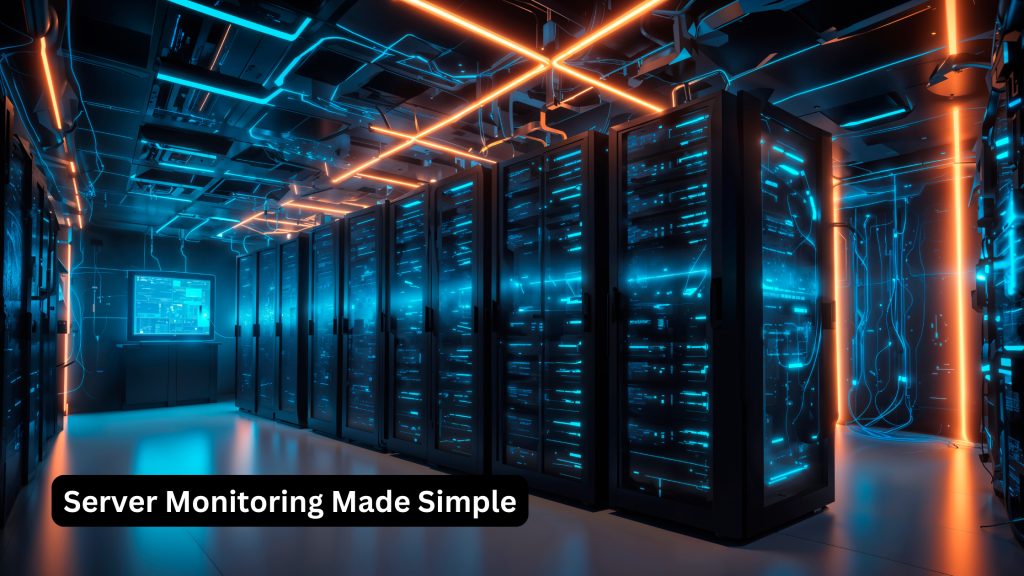
What Is Server Monitoring? A Complete Guide
Server monitoring is the continuous process of tracking the performance, health, and availability of your servers. Using specialized tools and software, server monitoring helps you:
- Keep track of server uptime and downtime.
- Analyze CPU, memory, and disk usage.
- Identify potential security vulnerabilities.
- Receive real-time alerts for performance issues.
By staying on top of these metrics, IT teams can proactively address problems before they escalate, ensuring a seamless user experience and minimizing costly disruptions.
Why Is Server Monitoring Important?
The importance of server monitoring cannot be overstated. Here’s why it matters:
Minimizes Downtime
Downtime can cost businesses thousands of dollars per minute. Server monitoring tools send real-time alerts that help IT teams quickly resolve issues, ensuring maximum uptime and minimal disruptions.
Improves Performance
Continuous monitoring helps businesses identify performance bottlenecks. For instance, excessive CPU or memory usage can be resolved before it affects server performance.
Enhances Security
Server monitoring detects unusual activity, such as unauthorized access attempts or malware, enabling quick action to mitigate threats and protect sensitive data.
Optimizes Resource Allocation
Monitoring tools provide insights into resource usage, helping organizations allocate resources efficiently and avoid unnecessary costs.
How Does Server Monitoring Work?
Server monitoring tools, such as Xitoring, operate by collecting and analyzing data from your server’s hardware and software. Here’s how they work:
- Data Collection: Agents or scripts installed on the server gather key metrics like CPU usage, disk space, and network traffic.
- Data Analysis: The collected data is analyzed to identify patterns or anomalies that indicate potential issues
- Alerts and Reporting: When issues are detected, real-time alerts are sent via email, SMS, or integrations like Slack. Detailed reports help IT teams review performance trends and make informed decisions.
Key Metrics in Server Monitoring
To effectively monitor servers, it’s essential to track the following metrics:
- Uptime: Measure the percentage of time the server is operational.
- CPU Usage: Monitor how much processing power is being used.
- Memory Usage: Ensure the server’s memory is not overburdened.
- Disk Space: Track available storage to prevent crashes due to insufficient space.
- Network Traffic: Analyze bandwidth usage and detect unusual traffic spikes.
- Error Logs: Review logs for recurring errors that could signal deeper issues.
Tools for Server Monitoring
A variety of server monitoring tools are available, each offering unique features. Here are a few popular options:
- Xitoring: Renowned for real-time monitoring capabilities and uptime alerts.
- Nagios: A versatile tool with robust monitoring for servers and networks.
- SolarWinds Server & Application Monitor: Offers deep insights into server performance and dependencies.
- Datadog: Provides comprehensive cloud-based monitoring solutions.
When choosing a tool, consider factors like ease of use, integration capabilities, scalability, and cost.
Best Practices for Effective Server Monitoring
To maximize the benefits of server monitoring, follow these best practices:
- Define Clear Objectives: Identify which metrics are most critical to your business.
- Set Real-Time Alerts: Configure alerts for key metrics to address issues promptly.
- Automate Where Possible: Use tools that offer automated responses to specific issues.
- Regularly Review Reports: Analyze performance trends to identify and resolve potential problems.
- Prioritize Security: Ensure monitoring tools are set up to detect potential security breaches.
How Xitoring Can Help
Xitoring simplifies server monitoring with its intuitive interface and robust features. Whether you need to track uptime, analyze performance metrics, or set up real-time alerts, Xitoring delivers reliable insights to keep your servers running smoothly. Designed for businesses of all sizes, Xitoring’s flexible tools can be tailored to your specific needs.
Conclusion
Server monitoring is essential for maintaining optimal server performance, reducing downtime, and enhancing security. By leveraging the right tools and following best practices, businesses can proactively address issues and deliver seamless experiences to their users.
Ready to elevate your server monitoring game? Explore Xitoring’s solutions today and take the first step toward uninterrupted server performance!